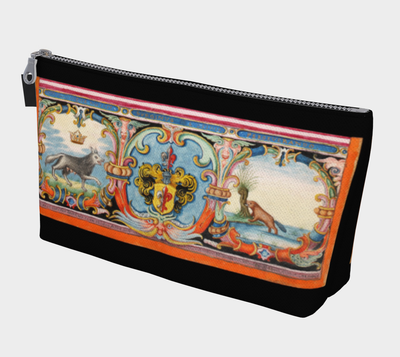If you own a pet, chances are you have at some point joked about the secret life of your pet, or perhaps a friend or a family member made fun comments about your pet’s real identity.
But what if these jokes were actually true?
Johnny Reed was the sexton for his church and one afternoon he was digging a parishioner’s grave. It was hard work and, being winter, the soil was even harder than usual; sooner than he realized, it became dark.
Finally, her husband returned, or better he rushed in, in a visible state of agitation.
“Who is Tommy Tildrum?” he cried.

“As I was digging the grave, it quickly became very dark and I went looking for my oil lamp. That’s when I heard a strange Meow coming from behind the church.”
‘Meow!’ replied Old Tom, while napping on his mistress lap.
“Yes, just like that!” said Mr. Reed. “I thought a cat might have gotten hurt or trapped, so I went behind the church to check. But I could not believe my eyes!”
“What did you see?” asked the wife anxiously (and with a little bit of fear).
“I saw nine pairs of cats’ eyes! They were nine black cats, so all that I could see were their eyes, shining all at once with a sort of green sparkle. The thing is, they were carrying a coffin covered with a black velvet, and a gold crown on top..."

Without taking a breath, Mr. Reed continued, "The cat at the front of the procession even talked to me!”
‘Meow!’ said Old Tom again.
“Like that?!” asked the wife, now on the verge of laughing.
“No, no, he actually talked to me like YOU are talking to me! I am telling you, the cat said to me, “Tell Tommy Tildrum that Timmy Toldrum is dead,” and that’s why I am asking you if you know him.

"Now," sighed Mr. Reed, "how can I tell Tommy Tildrum that Timmy Toldrum’s dead…if I don’t know who this Tommy is?!”
It was at this very moment that Old Tom, their house cat, jumped off the lap of the sexton’s wife, and shouted, “What? Old Tim dead!...then I’m the new King o’ the Cats!” and rushed out of the house to never again be seen.

Yes, this is a strange story. Especially because there seems to be almost no point to it.
But this story has very ancient origins and has developed into many different versions in Northern Europe, especially all over England. Every version has in common very odd names, like: “Tell Dan Ratcliffe that Peggy Poyson’s dead”, or “Tell Madame Momfoot that Mally Dixon’s dead!”
ORIGINS
These stories might have actually had a social function, lifting the spirit of kids saddened by the disappearance of their cat – an occurrence that was not uncommon in the Middle Ages. Most of the population was rural and house cats were set free to wander, because they were expected to clear the area from mice and other vermin. They were not just pets kept inside the house for company (only the rich could afford such a pet), but working animals exposed to the dangers of the quasi-wild; plus, they were not neutered, and some would often take off looking for a mate. When this happened, the parents had a story to tell their kids: their cat was not just any cat, but the very King of Cats - and he had now gone back to his cat’s kingdom!

All these stories may all have originated from an ancient Danish tale, about a troll taking the appearance of a cat and residing with a nice family that fed him and treated him well. In this story, the cat ran away when he heard that his enemy had died and he could finally return to his village (to the lady-troll he loved).
Tales of shape-changing cats who could turn into other creatures were very common during medieval times, especially stories of cats-women.
For example, the “Hammer of Witches” tells an episode of a man being accused of beating three respectable women of the town. In the end, he was able to convince the magistrate that these women had attacked him instead, while in the shape of cats, and he had simply fended the wild cats off.
A UNIQUE DESIGN
At MedievalMade we created our unique “King of Cats” design, using historical references from original illuminations, and adopting medieval techniques for the creation of the painting.

The King of Cats wears a golden coronet full of precious pearls, sign of his newfound royalty. He sits inside a jewel, and majolica vines sprout out of his ears - an interesting detail we have found in more than one manuscript. This idea might have originated from the medieval belief that plants could grow from cat’s ears if not properly cleaned, but there is also another explanation.
The “cat’s ear” was a species of plant widely consumed in Europe, called cat’s ear because its shape and furry aspect resembles the ear of a cat. Today this species is also known as false dandelion. Drawing a cat’s ear (plant) sprouting out of a real cat’s ear might have been a visual pun enjoyed by miniaturists (we have many times mentioned the deep sense of humor of medieval illustrations).
CONCLUSION
The story of the King of Cats still resonates with us, and we wonder why. A little cynical and leaving one guessing, it seems as modern as any modern story can be.
We can conclude that the feature of being both wild and domesticated at once, typical only of cats, is exactly the source of fascination with these special creatures, from the Egyptian civilization to the Middle Ages, all the way to modern times. The King of Cats adds mystery to an already mysterious creature, that never stops to surprise and inspire.








